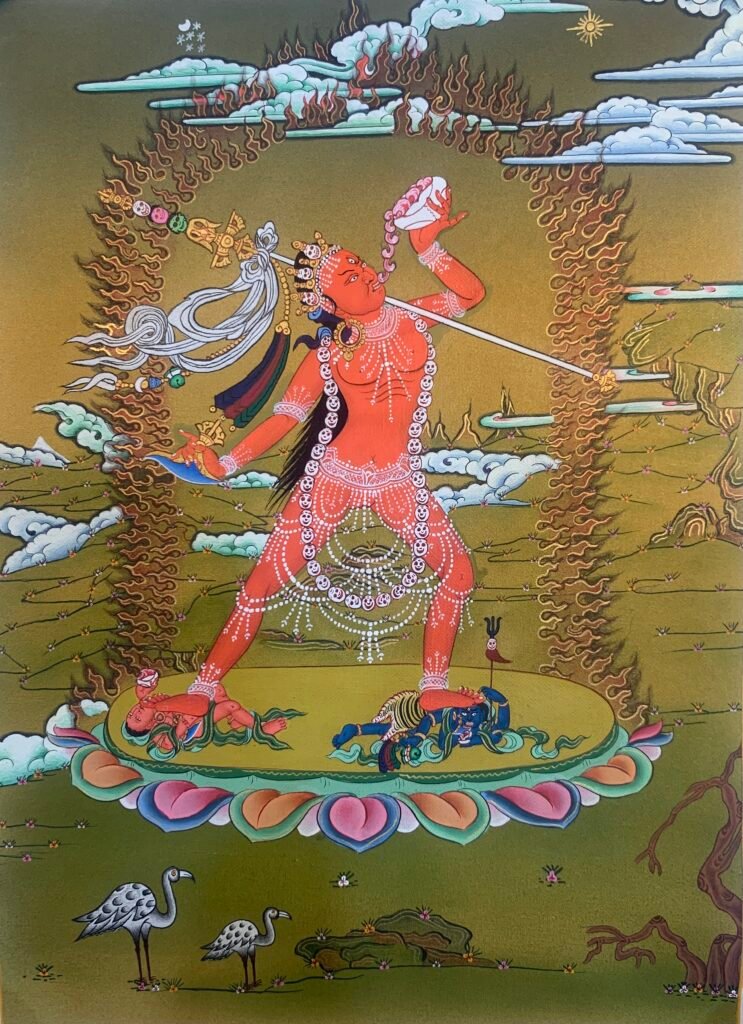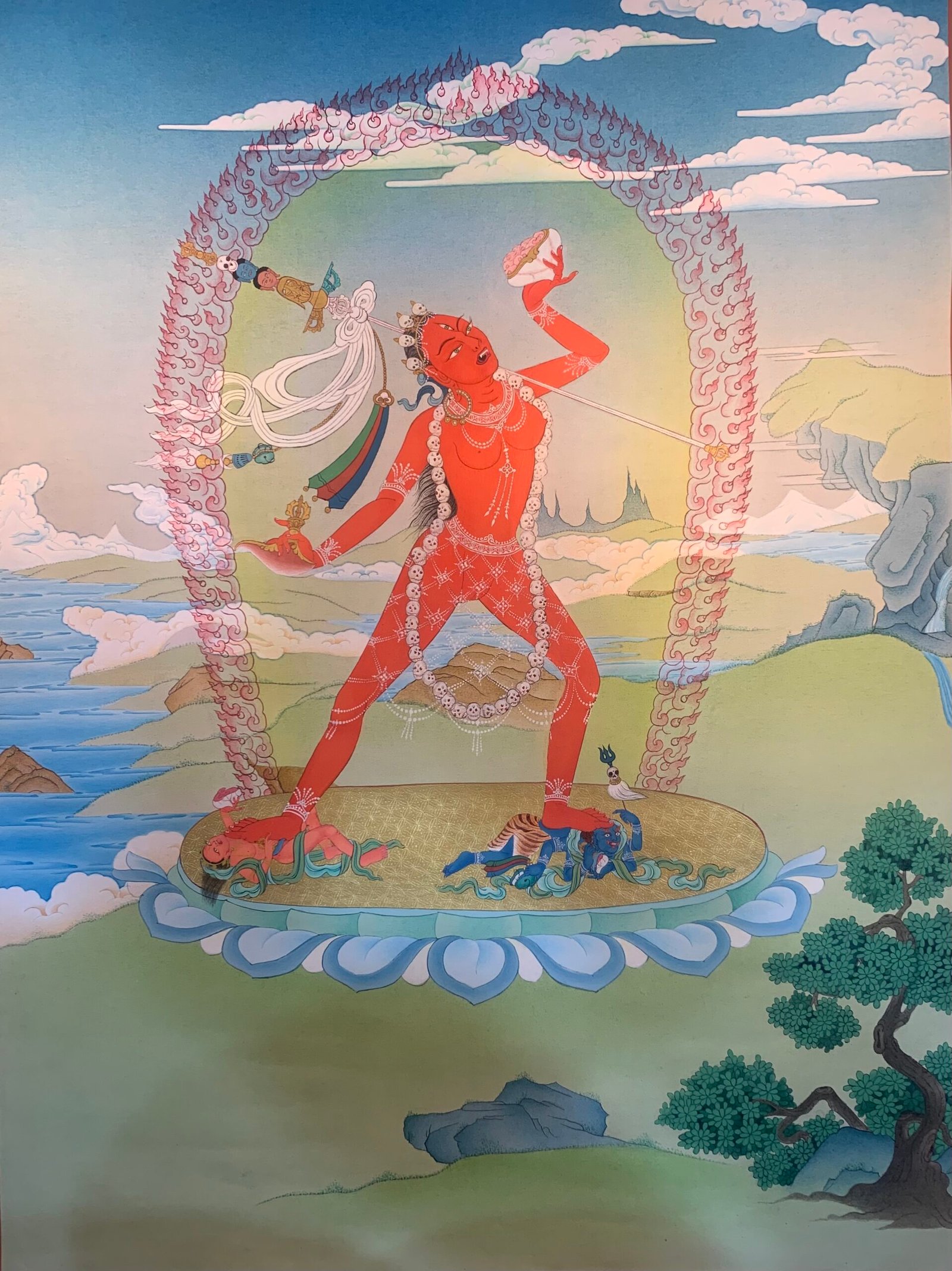Tibetan Thangka painting Vajrayogini symbolize through Mahayana and Vajrayana tradition.
Tibetan Thangka Vajrayogini has beautiful smooth, freely flowing waist-length black hair can, it symbolizes the unchanging nature of Vajrayogini’s enlightened dharmakaya, or truth body. Her breasts are full with nipples erect, symbolizing the arousal of desire and indicating that Vajrayogini helps those with strong passion to transform it into the realization of great bliss. Her body is naked, demonstrating Vajrayogini’s freedom from ordinary conceptions and appearances. She is adorned with various bone ornaments, crown, bone-apron and so forth. Symbolizing the first five perfections making up the method aspect of the path, generosity, discipline, patience, effort and meditative concentration.
Vajrayogini is sixteen years old, radiantly beautiful with a youthful freshness and vitality, and her face bears and intense expression reflection her passionate nature. She has three eyes, symbolizing her enlightened ability to see past, present and future simultaneously. Her eyes gaze upwards to the Land of the Dakinis, demonstrating that Vajrayogini has the power to guide serious practitioners directly to her pure land.Shorten with AI

In her right hand is a curved flaying knife marked by a vajra, and in her left she holds a skull-cup filled with blood as if she were about to drink from it. These implements symbolize respectively the wisdom that cuts through the fabrications of ignorance and the blissful clear light consciousness that has unified with this penetration wisdom.Shorten with AI
Supported on her left shoulder is a staff known as a khatvanga. This represents her consort Heruka Chakrasamvara and indicates that he and Vajrayogini are inseparable, whether he is explicitly visualized together with her or not. It should be borne in mind that the practices of Vajrayogini are derived from the Chakrasamvara Tantra and are the distilled essence of that profound meditational system. The symbolism of the khatvanga itself is extremely profound and each detail can be understood as representing different aspects of Chakrasamvara’s mandala and the sisty-two deities contained therein.
Tibetan Thangka painting Vajrayogini red color body represents the sixth perfection, wisdom, and through her wearing of these bone ornaments the union of method and wisdom is indicated yet again. Finally, around Vajrayogini’s nick hangs a garland of fifty human skulls symbolizing the purity of her speech. She have one face and two arms and stands up Bhairava and Kalarati. and her left under feet Kalarati, symbol of her wisdom and right under feet Bhairava symbol her method aspect.

One of the special features of Vajrayogini’s tantric path is that it contains methods for practicing the generation and completion stages of highest yoga tantra simultaneously. And one of the unique results of this unified path is the ability of the supremely successful practitioner to attain Vajrayogini’s pure land withut having to give up his or her present body.
There are many accounts some of them very recent of dedicated practitioners who at the end of their lives simply disappeared, leaving nothing behind but their hair, fingernails and the clothes they were wearing; this is a mark of having attained the so-called rainbow body, a sign of successful practice. The shrine at Parping mentioned earlier is the site where the original disciples to whom Naropa taught the tantra of Vajrayogini.
Naropa at the begining of this section relate how a particular practitioner encountered a living manifestation of Vajrayogini herself. Vajrayogini as a leaneage holder of the Chakrasamvara tradition, had once been the foremost scholar at the famous Nalanda monastic university in North India. In honor of his intellectual accomplishments, of which he was very proud, Naropa was appointed gatekeeper of Nalanda’s nothern entrance. In this position it was his duty to defend that monastery’s philosophical traditions against all who came to challenge them. Through the power of his immense learning and stainless logic, he was invariably successful in this demanding task, and thus his fame grew.

